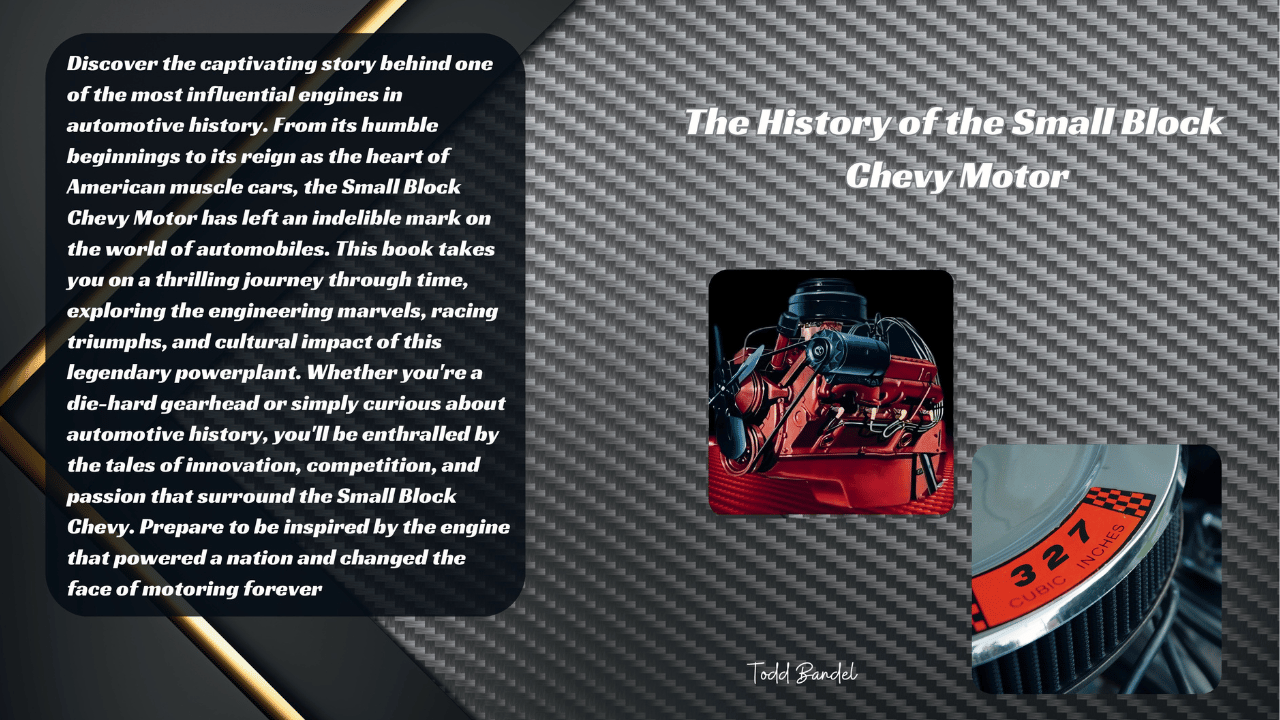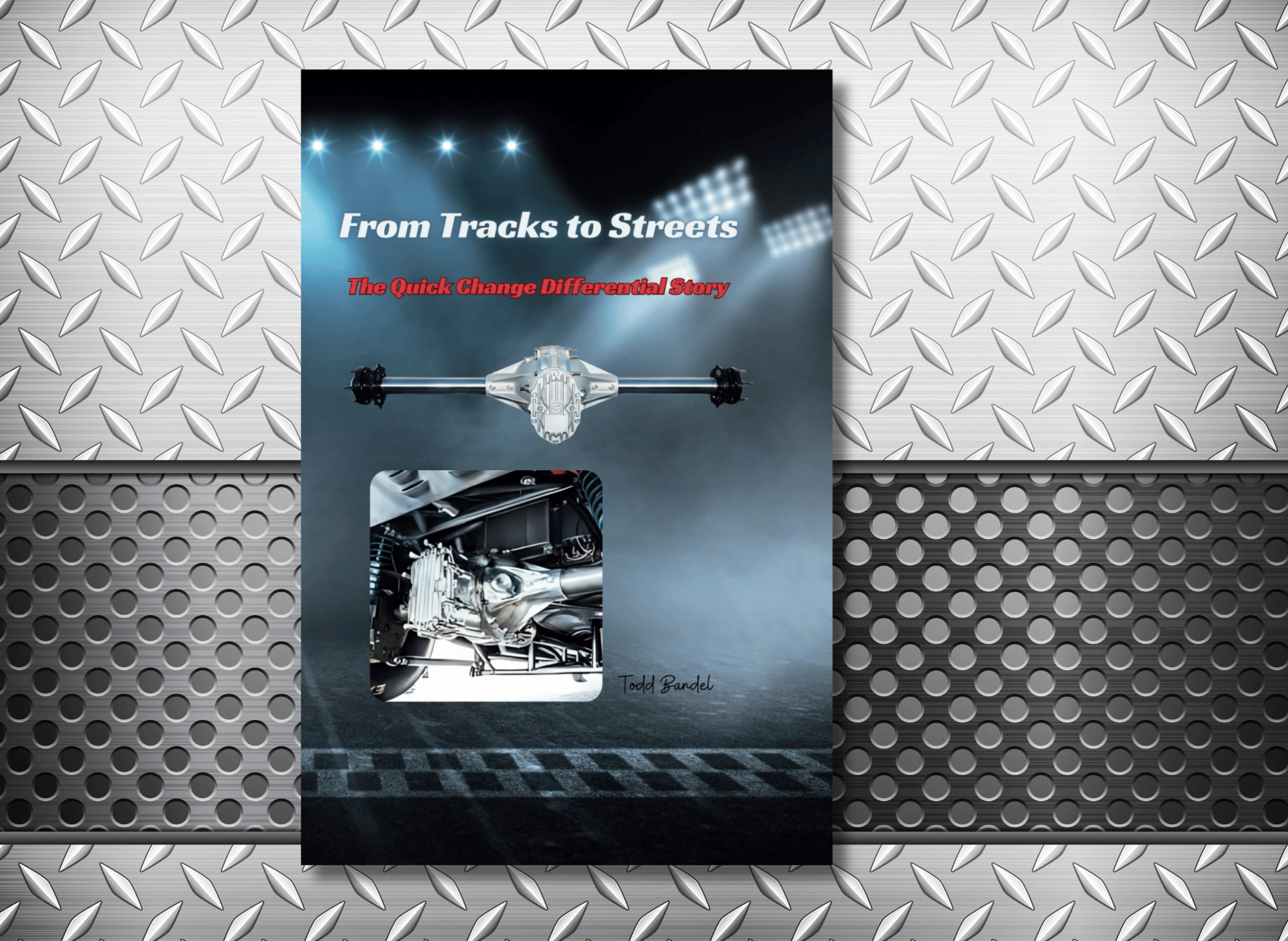How Quick Change Rear Ends Revolutionized Racing
This book takes you on a historical journey from early designs to state-of-the-art advancements in quick change differentials.
Welcome to Mechanicaddicts. As an Amazon Associate, we earn from qualifying purchases (at no cost to you) from links found within these pages if you choose to buy something.
Have you ever wondered what makes race cars adaptable and speedy on the track? The answer lies in a mechanical marvel known as the quick change differential. In Todd Bandel’s latest book, “From Tracks to Streets: The Quick Change Differential Story,” this ingenious invention takes center stage.
Designed for automotive enthusiasts, racing fans, and hot rod aficionados, this book dives into the exhilarating world of motorsport engineering. It highlights how remarkable and advantageous quick-change rear ends can be for rapidly adjusting gear ratios during racing events.
The Birth of Quick Change Differentials
The quick change differential wasn’t always part of the automotive lexicon. Its roots refer to when racing was more about daring feats than engineering precision. Early racers needed a way to quickly adapt their cars to different track conditions without spending hours in the workshop.
Enter the pioneering engineers who revolutionized car racing by creating a quick-change differential system. This book takes us back to these formative days, introducing us to the brilliant minds who made it all possible. It's cool to see how this innovative technology transformed the racing world.
The History of Circle Track Racing
Circle track racing has a storied history that dates back to the early 20th century, originating in the United States. This thrilling motorsport quickly captured the imagination of racing enthusiasts across the country. The earliest events were on dirt tracks, where drivers showcased their skills in modified cars with straight-cut gears. These early races were as much about daring and bravery as they were about speed and precision.
As the sport evolved, so did the technology. The introduction of quick-change rear ends marked a significant milestone in circle-track racing. These innovative rear ends allowed drivers to swiftly change gears, adapt to varying track conditions, and gain a competitive edge. The ability to quickly change gears without extensive downtime revolutionized the sport, making it more dynamic and exciting.
Circle track racing remains a beloved form of motorsport, with various classes and divisions, including dirt cars, sprint cars, and late models. The legacy of those early pioneers lives on as modern racers continue to push the boundaries of speed and performance, thanks in part to the advancements in quick-change rear ends.
The Limitations of Traditional Rear Ends
Traditional rear ends, while functional, have several limitations that can hinder a car’s performance on the track. One of the most significant drawbacks is the inability to quickly change gears, which can be a considerable disadvantage in the high-stakes world of competitive racing. Traditional rear ends are also often heavier and less efficient, leading to increased drivetrain losses and reduced overall performance.
Moreover, traditional rear ends require frequent maintenance and repairs, which can be time-consuming and costly. The need for constant upkeep can detract from valuable time spent on the track, fine-tuning other aspects of the car’s performance.
In contrast, quick-change rear ends offer a more efficient and convenient solution. They allow drivers to quickly change gears and adapt to changing track conditions, providing a significant competitive advantage. The ease of maintenance and the ability to make rapid adjustments make quick-change rear ends an indispensable component in modern racing.
How Quick Change Differentials Work
At its core, a quick change differential allows for rapid adjustments in gear ratios. This flexibility is crucial for racers who need to tweak their setups based on track conditions and competition.
The mechanism involves a series of gears that can be swapped out easily, allowing for swift adaptability. In “From Tracks to Streets,” these complex engineering concepts are simplified, making them accessible even to readers with no technical background. Additionally, rapidly adjusting gear ratios is an incredible advantage for racing applications, though it may not be necessary for casual track day enthusiasts.
The Evolution of Quick Change Differentials
From its humble beginnings, the quick change differential has undergone numerous transformations. Initially, it was a rudimentary invention, but engineers refined its design over time to enhance performance and reliability.
This book traces this evolution, highlighting key milestones and innovations that have shaped the differential’s development. Readers will learn how modern advancements have made this component indispensable in motorsport. These advancements have made quick-change differentials particularly excellent for modern racing applications.
Transition to Street Use
While quick-change rear ends are primarily designed for racing applications, they can also be adapted for street use. However, this transition requires careful consideration of the driver's specific needs and goals. Street use presents different challenges, including noise levels, vibration, and durability.
Quick-change rear ends can be noisier and produce more vibration than traditional rear ends, which may not be ideal for everyday driving. The added weight and complexity of these rear ends can also impact the car’s overall performance and handling on the street. It’s essential to weigh these factors carefully before making the switch.
For drivers who are passionate about taking their car from the track to the street, a quick-change rear end can still be a viable option. With the right adjustments and considerations, it is possible to enjoy the benefits of quick-change technology in a street-legal vehicle, blending the best of both worlds.
Installation and Maintenance
Installing a quick change rear end requires meticulous planning and execution. Ensuring the rear end is configured correctly and aligned is crucial to avoid damage or premature wear. Regular maintenance is equally important to extend the life of the rear end and prevent potential issues.
Key maintenance tasks include checking the gear sets, bearings, and seals and regularly lubricating the rear end ring and pinion. It’s also essential to be aware of the specific maintenance requirements for your quick-change rear end, including any special tools or procedures that may be needed.
Following proper installation and maintenance procedures, drivers can ensure optimal performance and longevity from their quick-change rear end. This attention to detail will pay off on the track, where every bit of performance counts.
Safety Considerations
Safety is paramount in racing and high-performance driving. While quick-change rear ends offer numerous advantages, they can pose safety risks if not properly installed or maintained. A faulty or worn-out rear end can fail catastrophically, leading to a loss of control or even an accident.
The added weight and complexity of quick-change rear ends can also affect the car’s handling and stability, particularly at high speeds. Proper safety protocols when working with these components, including wearing protective gear and ensuring that the car is securely supported during maintenance, are essential.
By taking the necessary safety precautions, drivers can minimize the risks associated with quick-change rear ends and enjoy a safe and successful racing experience. Proper installation, regular maintenance, and adherence to safety guidelines are key to harnessing the full potential of quick-change technology while keeping safety at the forefront.
The Impact of Quick Change Differentials on Motorsport
The introduction of quick-change differentials has profoundly impacted the world of motorsport. These components have transformed racing strategies by allowing for rapid gear changes and opening new avenues for competition.
This book explores the specific demands of motorsport applications, detailing how quick change differentials are utilized in various forms of racing, from rally cross to drag racing. The ability to rapidly change gears is an excellent feature that has transformed racing strategies.
How Quick Change Differentials Are Used in Hot Rods
Quick change differentials aren’t limited to professional racing circuits; they’ve also found a home in hot rodding. Hot rod enthusiasts appreciate the ability to customize their vehicles for performance and aesthetics.
This book shows how these enthusiasts use quick change differentials to fine-tune their rides, creating fast and visually striking machines. Many hot rod enthusiasts find quick-change differentials excellent for customizing their vehicles.
Why You Should Read "From Tracks to Streets"
Whether you’re a motorsport enthusiast, an aspiring engineer, or simply curious about the world of automotive engineering, “From Tracks to Streets: The Quick Change Differential Story” has something to offer.
The book's engaging narrative and expert insights make this book a must-read for anyone eager to explore the fascinating world of racing and innovation. The fantastic aspects of quick change differentials make the book engaging for motorsport enthusiasts.
Join the Community of Automotive Enthusiasts
Reading “From Tracks to Streets” isn’t just about gaining knowledge—it’s about joining a community of like-minded enthusiasts with a passion for speed and engineering.
This book invites readers to connect with fellow gearheads, racers, and automotive fans to share experiences, insights, and ideas. Discussing the cool features of quick-change differentials can be a great way to connect with fellow enthusiasts.
Conclusion: A Journey Worth Taking
“From Tracks to Streets: The Quick Change Differential Story” is more than just a book; it’s a journey through the history, mechanics, and future of one of racing’s most significant innovations.
Whether you’re new to racing or a seasoned enthusiast, this book will deepen your appreciation for the art of engineering and the thrill of the race. The fantastic aspects of quick change gears and differentials make the journey through the book worthwhile.
Get ready to uncover the secrets of speed, engineering, and innovation with “From Tracks to Streets.” It’s time to rev your engines and explore the fascinating world of automotive engineering and motorsport today!
Thank you for reading!
Your friend,
Todd
#RacingTech #AutoInnovation #QuickChange #CarEnthusiast #AutomotivePerformance #GearheadLife #SpeedEngineering #VehicleModification #RacecarParts #MotorsportMechanics






